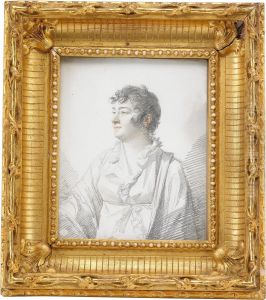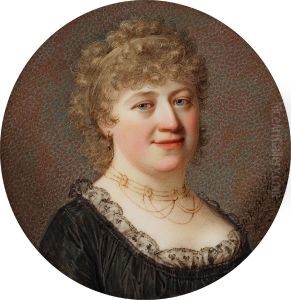Giovanni Domenico Bossi Paintings
Giovanni Domenico Bossi was an Italian painter, miniaturist, and art collector, recognized for his contribution to the late 18th and early 19th-century European art scene. Born in 1767, in the Republic of Venice, Bossi developed an early interest in the arts, which was nurtured and supported by his family. His initial artistic endeavors were influenced by the Venetian painting tradition, but he soon developed a unique style that combined elements of Neoclassicism and Romanticism.
Bossi's talent in miniature painting set him apart from his contemporaries. His ability to capture intricate details and his sensitivity to color nuances earned him accolades and commissions from high-ranking officials, nobility, and the church. Throughout his career, Bossi traveled extensively across Europe, including stays in Austria, Germany, and Russia, where he was exposed to a variety of artistic styles and techniques. These experiences broadened his artistic vision and influenced his work, which began to include larger compositions alongside his renowned miniatures.
Besides his achievements as an artist, Giovanni Domenico Bossi was also an avid art collector. His collection included works from a wide range of periods and styles, reflecting his eclectic tastes and deep appreciation for art. Bossi's collection was known among contemporaries for its quality and diversity, featuring pieces by both well-known and obscure artists. He was also instrumental in the cultural circles of his time, fostering relationships with artists, collectors, and scholars, which further enriched his understanding and appreciation of art.
Bossi's legacy extends beyond his paintings and collection. He played a significant role in the art community of his era, contributing to the dialogue between the Neoclassical and Romantic movements. His work, characterized by its technical skill, emotional depth, and aesthetic beauty, continues to be studied and admired. Giovanni Domenico Bossi died in 1853, leaving behind a body of work that remains significant in the study of European art history.










